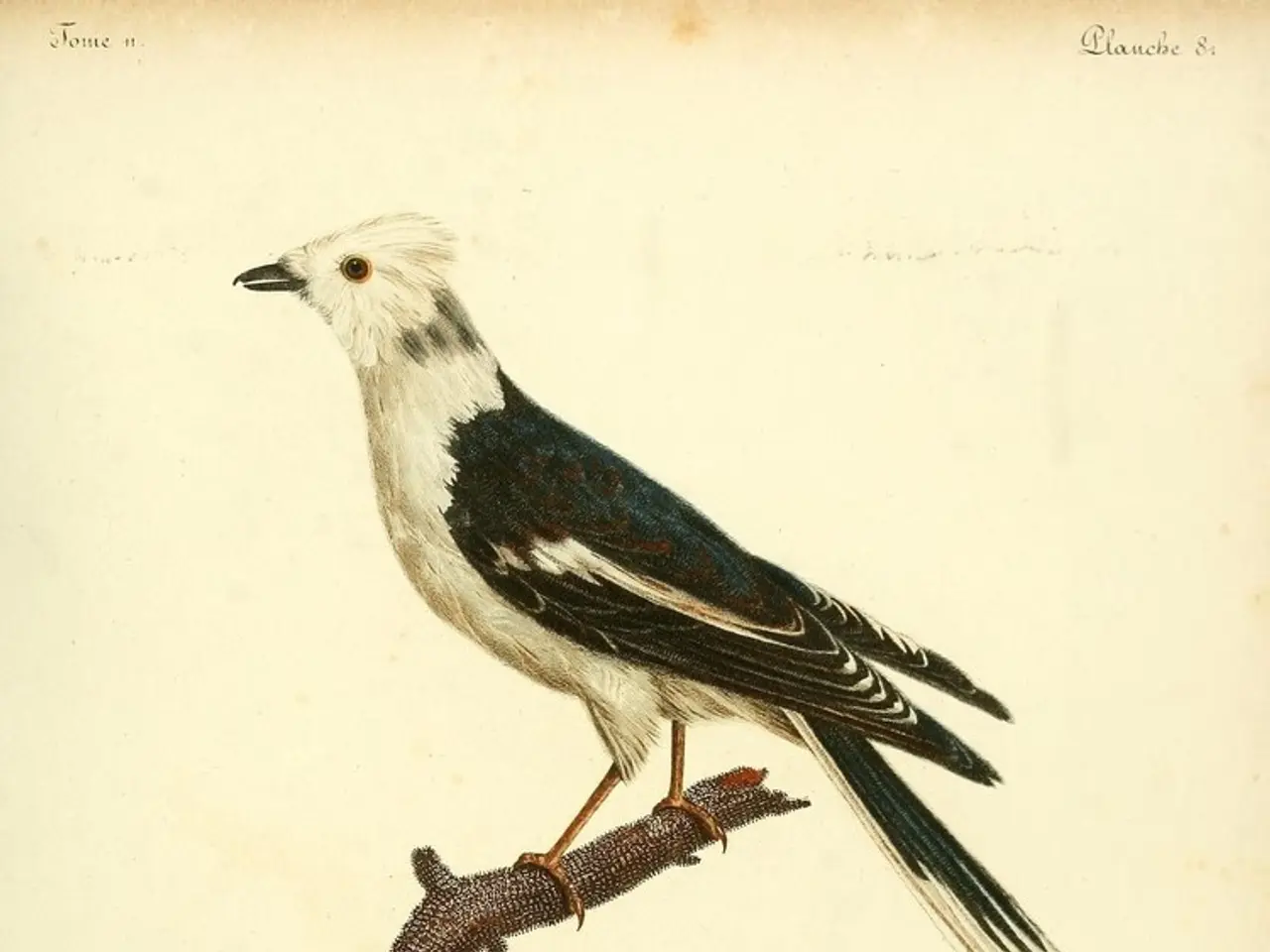Protecting bird feeders from squirrels is a trick gardeners swear by, and it's not as unusual a practice as it may seem at first glance
Keeping Squirrels Away from Bird Feeders: A Guide to Using Baffles
Baffles are an effective and humane way to keep squirrels away from bird feeders, allowing birds to feed in peace. Here's a guide on how to use baffles to keep squirrels at bay.
Choosing the Right Baffle
When selecting a baffle, it's essential to choose one made of durable, chew-resistant materials like metal or thick polycarbonate. Avoid flimsy plastic baffles, as squirrels can gnaw through them quickly. Look for dome-shaped or smooth, tapered baffle designs that prevent squirrels from gripping or climbing.
Pole-Mounted Baffles
For pole-mounted feeders, place the baffle below the feeder at least 4 to 5 feet off the ground. This setup blocks squirrels from climbing the pole. It's also important to position the pole at least 8 to 10 feet away from trees, fences, or anything squirrels can launch from.
Hanging Baffles
For hanging feeders, install the baffle above the feeder, positioned 2 to 3 feet below a branch or support. This creates a slippery barrier that squirrels can't bypass from above. Hanging feeders with baffles need the same clearance as pole-mounted baffles.
Additional Tips
Ensure there are no nearby jumping-off points within 8 to 11 feet horizontally to prevent squirrels from jumping onto the feeder or baffle. If squirrels attempt different access strategies, adjust baffle placement accordingly—above the feeder for jumps from above, below the feeder on the pole for climbing attempts. For hanging feeders, consider baffles that can spin or tilt to further prevent squirrels from gaining footing.
Maintenance and Positioning
Regularly inspect and maintain baffles to ensure they haven’t shifted or been damaged by squirrels. Position the feeder at an ideal height (about 5 to 6 feet) to reduce squirrel reach and allow birds to feed safely.
Blending into Your Landscape
Baffles are available in sleek, stylish designs that blend into your landscape, ensuring your outdoor space remains attractive. There are also options like a 19" extra-wide baffle designed to wobble and prevent stable footing, made from durable, weather-resistant PP material with a sleek black finish. A durable, black powder-coated steel baffle with a torpedo-shaped design is also available, mounting easily below feeders.
A Natural Deterrent
In addition to using baffles, sprinkling cayenne pepper around bird feeders or flower beds can act as a natural deterrent for squirrels. Planting marigold flowers can also help, as their strong scent repels squirrels.
In summary, a strategic combination of feeder placement far from launching points, appropriately sized and positioned pole or hanging baffles of durable material, and ongoing observation and adjustment forms the best method to keep squirrels away from bird feeders effectively. Baffles create a physical barrier without disrupting the look or feel of your outdoor space.
Baffles can be strategically placed not only to keep squirrels away from bird feeders but also to beautify home-and-garden areas, as they are available in sleek designs that blend into various landscapes. For a natural deterrent, consider adding marigold flowers to your flower beds or sprinkling cayenne pepper around your bird feeders and garden.




